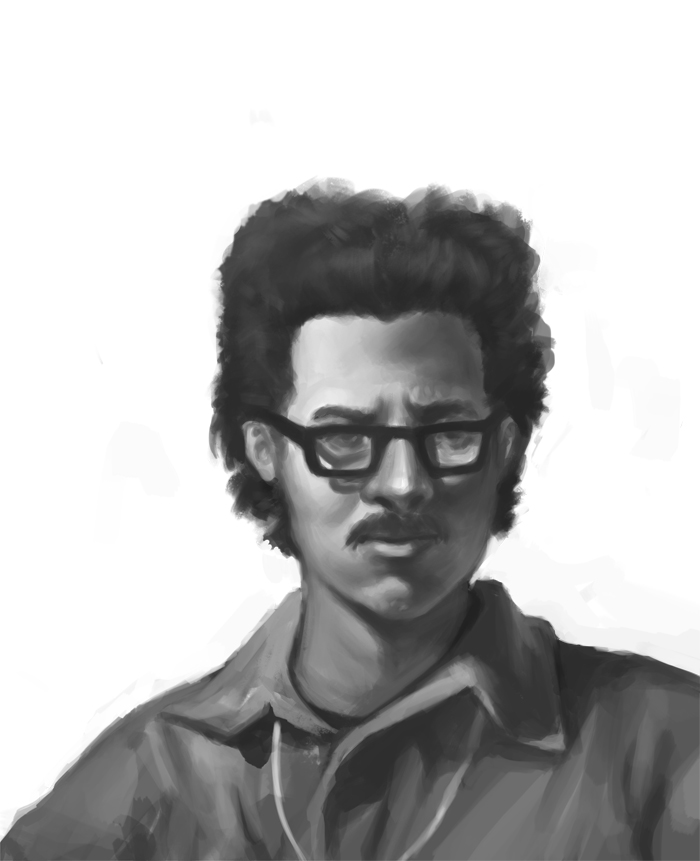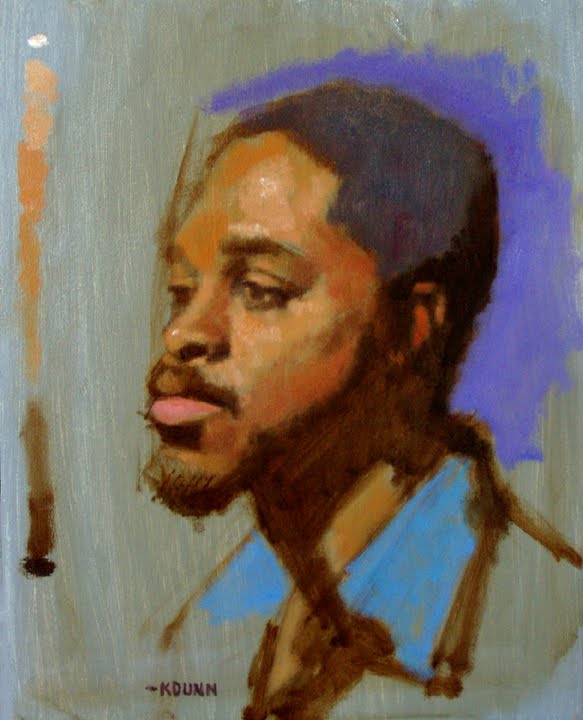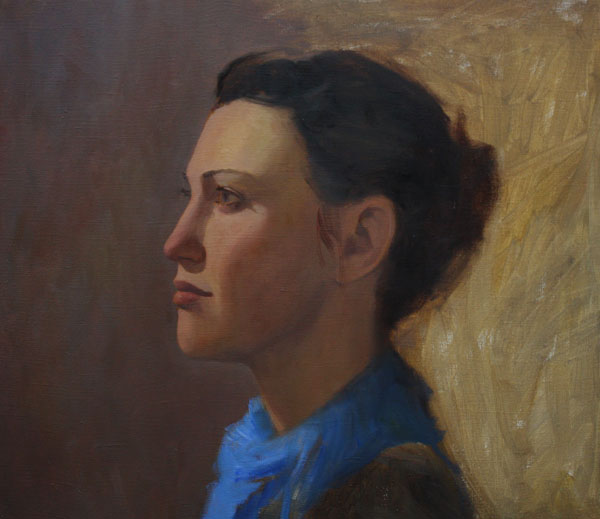
techno_arch
09-19 07:50 PM
I applied for my AP in June and recently at the end of August my AP was approved. I received the AP a couple of weeks later in mail. However I noticed that instead of receiving the I-512 Authorization of Parole of an Alien into the United States, I received an I-797C Notice of Action document for me an my wife. The contents of this I-797C are exactly the same as the previous I-512s that I have filed for and received over the years.
What I am afraid of is that this may cause problem at the port of entry when I return back from India because of the wrong title of the document.
Has anyone else received such a a document I-797C instead of I-512 and is it safe to travel having such a document? Any advice/input is appreciated.
What I am afraid of is that this may cause problem at the port of entry when I return back from India because of the wrong title of the document.
Has anyone else received such a a document I-797C instead of I-512 and is it safe to travel having such a document? Any advice/input is appreciated.
wallpaper Acrylic Portrait Painting
saji007
05-20 02:13 PM
Yes you can transfer PD.

gc_chahiye
08-15 04:54 AM
XXXXXXXXXXXXXXXXXXXXXXXXXXXXXXXXXXXXXXXXXXX
Duplicate thread of this one:
http://immigrationvoice.org/forum/showthread.php?t=12402
XXXXXXXXXXXXXXXXXXXXXXXXXXXXXXXXXXXXXXXXXXX
Admins/moderators: can you please delete this thread?
Duplicate thread of this one:
http://immigrationvoice.org/forum/showthread.php?t=12402
XXXXXXXXXXXXXXXXXXXXXXXXXXXXXXXXXXXXXXXXXXX
Admins/moderators: can you please delete this thread?
2011 Portrait Painting: Photos and

xgr3
05-14 08:40 PM
What does this status message means?
Current Status: This case has been sent to another office for processing because it has jurisdiction over the case.
Transferred to Texas from Nebraska.
Filing info
-------------------
Category : EB3
PD : July 2006
Labor and 140 Approved.
I-485 filed on Jul 2007
LUD - 03/30/2009
Current Status: This case has been sent to another office for processing because it has jurisdiction over the case.
Transferred to Texas from Nebraska.
Filing info
-------------------
Category : EB3
PD : July 2006
Labor and 140 Approved.
I-485 filed on Jul 2007
LUD - 03/30/2009
more...

Blog Feeds
06-12 07:00 PM
It seems that everytime you breathe in and breathe out, there is a new immigration story or event which may affect you. A new law is introduced in Congress, another Visa Bulletin is published, the USCIS has yet again updated its processing times, the Courts have decided an important immigration case, the H-1B cap has been reached, etc., etc. How do you keep up with all of this without driving yourself totally crazy? Yes, there is the Internet. But there are thousands of attorneys and multiple government agencies all posting immigration news at the same time. You could subscribe to...
More... (http://blogs.ilw.com/carlshusterman/2010/06/immigration-info-made-easy.html)
More... (http://blogs.ilw.com/carlshusterman/2010/06/immigration-info-made-easy.html)

wayne3alford
07-30 07:21 AM
There should be some action taken!!!!!!!
more...

downloadzombie
06-14 10:36 PM
Hi All,
Seeems there is bigger gameplan around here..
a compromise has been reached between Democrats and Republics for CIR.
http://www.cnn.com/2007/POLITICS/06/14/congress.immigration.bill/index.html
Lets hope all those eligible for I485 get green card asap.
for rest (including me)we can hope that some amendments can bring relief.
IV I have to say only one thing "When going gets tough,tough get going"
All the best
Seeems there is bigger gameplan around here..
a compromise has been reached between Democrats and Republics for CIR.
http://www.cnn.com/2007/POLITICS/06/14/congress.immigration.bill/index.html
Lets hope all those eligible for I485 get green card asap.
for rest (including me)we can hope that some amendments can bring relief.
IV I have to say only one thing "When going gets tough,tough get going"
All the best
2010 Portrait Painting Atelier by

ho_gaya_kaya_?
10-17 02:56 PM
Here is my story
July 2nd - Wife and I applied for 485\EAD\AP
The lawyer sent a single check(I know !!! I know !!!)
Our applications got separated.
Mine came back on Aug 30th and my wifes last week
We have now refiled
This time it has gone for "special handling"-bypassing the mail room
I haven't got the receipt yet
Anyone who had a similar experience or went via special handling for some other reason...
How long does it take to get the receipt nowadays ?
(I couldn't see any receipt update on USCIS- I guess most of the people are past that stage)
Will special-handling speed up my Receipt OR EAD OR AP?
Thanks
July 2nd - Wife and I applied for 485\EAD\AP
The lawyer sent a single check(I know !!! I know !!!)
Our applications got separated.
Mine came back on Aug 30th and my wifes last week
We have now refiled
This time it has gone for "special handling"-bypassing the mail room
I haven't got the receipt yet
Anyone who had a similar experience or went via special handling for some other reason...
How long does it take to get the receipt nowadays ?
(I couldn't see any receipt update on USCIS- I guess most of the people are past that stage)
Will special-handling speed up my Receipt OR EAD OR AP?
Thanks
more...

Macaca
10-27 10:14 AM
America has a persuadable center, but neither party appeals to it (http://www.washingtonpost.com/wp-dyn/content/article/2007/10/25/AR2007102502774.html) By Jonathan Yardley (yardleyj@washpost.com) | Washington Post, October 28, 2007
THE SECOND CIVIL WAR: How Extreme Partisanship Has Paralyzed Washington and Polarized America By Ronald Brownstein, Penguin. 484 pp. $27.95
These are difficult times for American politics at just about all levels, but especially in presidential politics, which has been poisoned -- the word is scarcely too strong -- by a variety of influences, none more poisonous than what Ronald Brownstein calls "an unrelenting polarization . . . that has divided Washington and the country into hostile, even irreconcilable camps." There is nothing new about this, he quickly acknowledges, and "partisan rivalry most often has been a source of energy, innovation, and inspiration," but what is particularly worrisome now "is that the political system is more polarized than the country. Rather than reducing the level of conflict, Washington increases it. That tendency, not the breadth of the underlying divisions itself, is the defining characteristic of our era and the principal cause of our impasse on so many problems."
Most people who pay reasonably close attention to American politics will not find much to surprise them in The Second Civil War, but Brownstein -- who recently left the Los Angeles Times to become political correspondent for Atlantic Media and who is a familiar figure on television talk shows -- has done a thorough job of amassing all the pertinent material and analyzing it with no apparent political or ideological axe to grind. He isn't an especially graceful prose stylist, and he's given to glib, one-word portraits -- on a single page he gives us "the burly Joseph T. Robinson," "the bullet-headed Sam Rayburn," "the mystical Henry A. Wallace" and "the flinty Harold Ickes" -- but stylistic elegance is a rare quality in political journalism in the best of times, and in these worst of times it can be forgiven. What matters is that Brownstein knows what he's talking about.
He devotes the book's first 175 pages -- more, really, than are necessary -- to laying the groundwork for the present situation. Since the election of 1896, he argues, "the two parties have moved through four distinct phases": the first, from 1896 to 1938, when they pursued "highly partisan strategies," the "period in modern American life most like our own"; the second, from the late New Deal through the assassination of John F. Kennedy, "the longest sustained period of bipartisan negotiation in American history," an "ideal of cooperation across party lines"; the third, from the mid-1960s to the mid-1990s, "a period of transition" in which "the pressures for more partisan confrontation intensified"; and the fourth, "our own period of hyperpartisanship, an era that may be said to have fully arrived when the Republican-controlled House of Representatives voted on a virtually party-line vote to impeach Bill Clinton in December 1998."
As is well known, the lately departed (but scarcely forgotten) Karl Rove likes to celebrate the presidency of William McKinley, which serious historians generally dismiss out of hand but in which Rove claims to find strength and mastery. Perhaps, as Brownstein and others have suggested, this is because Rove would like to be placed alongside Mark Hanna, the immensely skilled (and immensely cynical) boss who was the power behind McKinley's throne. But the comparison is, indeed, valid in the sense that the McKinley era was the precursor of the Bush II era, which "harkened back to the intensely partisan strategies of McKinley and his successors." Bush's strategies are now widely regarded as failures, not merely among his enemies but also among his erstwhile allies on Capitol Hill, who grouse about "White House incompetence or arrogance." But Brownstein places these complaints in proper context:
"Yet many conservatives recognized in Bush a kindred soul, not only in ideology, but more importantly in temperament. Because their goals were transformative rather than incremental, conservative activists could not be entirely satisfied with the give and take, the half a loaf deal making, of politics in ordinary times. . . . In Bush they found a leader who shared that conviction and who demonstrated, over and again, that in service of his goals he was willing to sharply divide the Congress and the country."
This, as Brownstein notes, came from the man who pledged to govern as "a uniter, not a divider." Bush's service as governor of Texas had been marked by what one Democrat there called a "collaborative spirit," but "he is not the centrist as president that he was as governor." This cannot be explained solely by the influence of Rove, who appeared to be far more interested in placating the GOP's hard-right "base" than in enacting effective legislation. Other influences probably included a Democratic congressional leadership that grew ever more hostile and ideological, the frenzied climate whipped up by screamers on radio and television, and Bush's own determination not to repeat his father's second-term electoral defeat. But whatever the precise causes, the Bush Administration's "forceful, even belligerent style" assured nothing except deadlock on the Hill, even on issues as important to Bush as immigration and Social Security "reform."
Brownstein's analysis of the American mood is far different from Bush/Rove's. He believes, and I think he's right, that there is "still a persuadable center in American politics -- and that no matter how effectively a party mobilized its base, it could not prevail if those swing voters moved sharply and cohesively against it," viz., the 2006 midterm elections. He also believes, and again I think he's right, that coalition politics is the wisest and most effective way to govern: "The party that seeks to encompass and harmonize the widest range of interests and perspectives is the one most likely to thrive. The overriding lesson for both parties from the Bush attempt to profit from polarization is that there remains no way to achieve lasting political power in a nation as diverse as America without assembling a broad coalition that locks arms to produce meaningful progress against the country's problems." As Lyndon Johnson used to say to those on the other side of the fence, "Come now, let us reason together."
Yet there's not much evidence that many in either party have learned this rather obvious lesson. Several of the (remarkably uninspired) presidential candidates have made oratorical gestures toward the politics of inclusion, but from Hillary Clinton to Rudolph Giuliani they're practicing interest-group politics of exclusion as delineated in the Gospel According to Karl Rove. Things have not been helped a bit by the Democratic leadership on the Hill, which took office early this year with great promises of unity but quickly lapsed into an ineffective mixture of partisan rhetoric and internal bickering. Brownstein writes:
"Our modern system of hyperpartisanship has unnecessarily inflamed our differences and impeded progress against our most pressing challenges. . . . In Washington the political debate too often careens between dysfunctional poles: either polarization, when one party imposes its will over the bitter resistance of the other, or immobilization, when the parties fight to stalemate. . . . Our political system has virtually lost its capacity to formulate the principled compromises indispensable for progress in any diverse society. By any measure, the costs of hyperpartisanship vastly exceed the benefits."
Brownstein has plenty of suggestions for changing things, from "allowing independents to participate in primaries" to "changing the rules for drawing districts in the House of Representatives." Most of these are sensible and a few are first-rate, but they have about as much chance of being adopted as I do of being president. The current rush by the states to be fustest with the mostest in primary season suggests how difficult it would be to achieve reform in that area, and the radical gerrymandering of Texas congressional districts engineered by Tom DeLay makes plain that reform in that one won't be easy, either. Probably what would do more good than anything else would be an attractive, well-organized, articulate presidential candidate willing, in Adlai Stevenson's words, "to talk sense to the American people." Realistically, though, what we can look for is more meanness, divisiveness and cynicism. It's the order of the day, and it's not going away any time soon.
THE SECOND CIVIL WAR: How Extreme Partisanship Has Paralyzed Washington and Polarized America By Ronald Brownstein, Penguin. 484 pp. $27.95
These are difficult times for American politics at just about all levels, but especially in presidential politics, which has been poisoned -- the word is scarcely too strong -- by a variety of influences, none more poisonous than what Ronald Brownstein calls "an unrelenting polarization . . . that has divided Washington and the country into hostile, even irreconcilable camps." There is nothing new about this, he quickly acknowledges, and "partisan rivalry most often has been a source of energy, innovation, and inspiration," but what is particularly worrisome now "is that the political system is more polarized than the country. Rather than reducing the level of conflict, Washington increases it. That tendency, not the breadth of the underlying divisions itself, is the defining characteristic of our era and the principal cause of our impasse on so many problems."
Most people who pay reasonably close attention to American politics will not find much to surprise them in The Second Civil War, but Brownstein -- who recently left the Los Angeles Times to become political correspondent for Atlantic Media and who is a familiar figure on television talk shows -- has done a thorough job of amassing all the pertinent material and analyzing it with no apparent political or ideological axe to grind. He isn't an especially graceful prose stylist, and he's given to glib, one-word portraits -- on a single page he gives us "the burly Joseph T. Robinson," "the bullet-headed Sam Rayburn," "the mystical Henry A. Wallace" and "the flinty Harold Ickes" -- but stylistic elegance is a rare quality in political journalism in the best of times, and in these worst of times it can be forgiven. What matters is that Brownstein knows what he's talking about.
He devotes the book's first 175 pages -- more, really, than are necessary -- to laying the groundwork for the present situation. Since the election of 1896, he argues, "the two parties have moved through four distinct phases": the first, from 1896 to 1938, when they pursued "highly partisan strategies," the "period in modern American life most like our own"; the second, from the late New Deal through the assassination of John F. Kennedy, "the longest sustained period of bipartisan negotiation in American history," an "ideal of cooperation across party lines"; the third, from the mid-1960s to the mid-1990s, "a period of transition" in which "the pressures for more partisan confrontation intensified"; and the fourth, "our own period of hyperpartisanship, an era that may be said to have fully arrived when the Republican-controlled House of Representatives voted on a virtually party-line vote to impeach Bill Clinton in December 1998."
As is well known, the lately departed (but scarcely forgotten) Karl Rove likes to celebrate the presidency of William McKinley, which serious historians generally dismiss out of hand but in which Rove claims to find strength and mastery. Perhaps, as Brownstein and others have suggested, this is because Rove would like to be placed alongside Mark Hanna, the immensely skilled (and immensely cynical) boss who was the power behind McKinley's throne. But the comparison is, indeed, valid in the sense that the McKinley era was the precursor of the Bush II era, which "harkened back to the intensely partisan strategies of McKinley and his successors." Bush's strategies are now widely regarded as failures, not merely among his enemies but also among his erstwhile allies on Capitol Hill, who grouse about "White House incompetence or arrogance." But Brownstein places these complaints in proper context:
"Yet many conservatives recognized in Bush a kindred soul, not only in ideology, but more importantly in temperament. Because their goals were transformative rather than incremental, conservative activists could not be entirely satisfied with the give and take, the half a loaf deal making, of politics in ordinary times. . . . In Bush they found a leader who shared that conviction and who demonstrated, over and again, that in service of his goals he was willing to sharply divide the Congress and the country."
This, as Brownstein notes, came from the man who pledged to govern as "a uniter, not a divider." Bush's service as governor of Texas had been marked by what one Democrat there called a "collaborative spirit," but "he is not the centrist as president that he was as governor." This cannot be explained solely by the influence of Rove, who appeared to be far more interested in placating the GOP's hard-right "base" than in enacting effective legislation. Other influences probably included a Democratic congressional leadership that grew ever more hostile and ideological, the frenzied climate whipped up by screamers on radio and television, and Bush's own determination not to repeat his father's second-term electoral defeat. But whatever the precise causes, the Bush Administration's "forceful, even belligerent style" assured nothing except deadlock on the Hill, even on issues as important to Bush as immigration and Social Security "reform."
Brownstein's analysis of the American mood is far different from Bush/Rove's. He believes, and I think he's right, that there is "still a persuadable center in American politics -- and that no matter how effectively a party mobilized its base, it could not prevail if those swing voters moved sharply and cohesively against it," viz., the 2006 midterm elections. He also believes, and again I think he's right, that coalition politics is the wisest and most effective way to govern: "The party that seeks to encompass and harmonize the widest range of interests and perspectives is the one most likely to thrive. The overriding lesson for both parties from the Bush attempt to profit from polarization is that there remains no way to achieve lasting political power in a nation as diverse as America without assembling a broad coalition that locks arms to produce meaningful progress against the country's problems." As Lyndon Johnson used to say to those on the other side of the fence, "Come now, let us reason together."
Yet there's not much evidence that many in either party have learned this rather obvious lesson. Several of the (remarkably uninspired) presidential candidates have made oratorical gestures toward the politics of inclusion, but from Hillary Clinton to Rudolph Giuliani they're practicing interest-group politics of exclusion as delineated in the Gospel According to Karl Rove. Things have not been helped a bit by the Democratic leadership on the Hill, which took office early this year with great promises of unity but quickly lapsed into an ineffective mixture of partisan rhetoric and internal bickering. Brownstein writes:
"Our modern system of hyperpartisanship has unnecessarily inflamed our differences and impeded progress against our most pressing challenges. . . . In Washington the political debate too often careens between dysfunctional poles: either polarization, when one party imposes its will over the bitter resistance of the other, or immobilization, when the parties fight to stalemate. . . . Our political system has virtually lost its capacity to formulate the principled compromises indispensable for progress in any diverse society. By any measure, the costs of hyperpartisanship vastly exceed the benefits."
Brownstein has plenty of suggestions for changing things, from "allowing independents to participate in primaries" to "changing the rules for drawing districts in the House of Representatives." Most of these are sensible and a few are first-rate, but they have about as much chance of being adopted as I do of being president. The current rush by the states to be fustest with the mostest in primary season suggests how difficult it would be to achieve reform in that area, and the radical gerrymandering of Texas congressional districts engineered by Tom DeLay makes plain that reform in that one won't be easy, either. Probably what would do more good than anything else would be an attractive, well-organized, articulate presidential candidate willing, in Adlai Stevenson's words, "to talk sense to the American people." Realistically, though, what we can look for is more meanness, divisiveness and cynicism. It's the order of the day, and it's not going away any time soon.
hair Moore: Portrait Painting

nkavjs
10-30 03:43 PM
Friends Hi :
I have one question. Once we receive EAD and all 9 yards notices and once you switch from H1 to EAD system with same employer, are you still bound to work with same employer for full 40 hours.. can you cut your hours to 20 hours (nooo second job too). I can just work 20 hours a week . Is that permissible to be on EAD and still get GC processed?
Pls. advise me
Thanks
I have one question. Once we receive EAD and all 9 yards notices and once you switch from H1 to EAD system with same employer, are you still bound to work with same employer for full 40 hours.. can you cut your hours to 20 hours (nooo second job too). I can just work 20 hours a week . Is that permissible to be on EAD and still get GC processed?
Pls. advise me
Thanks
more...

gcformeornot
08-09 08:19 PM
I have exact opposite case. My 140 was approved at TSC. Lawyers sent 485 to NSC. I asked they said its ok. Since they sent copy of 140 with 485. You can file anywhere.
hot portrait painting class.

sanjana_bhatt
06-28 03:13 PM
Can somebody answer this question??!!
I am on H-4 here. Back in India i worked for a while but dint file my tax return :(
Now for GC, if I mention the previous work ex in the form, do I need to provide the returns or something??
I am on H-4 here. Back in India i worked for a while but dint file my tax return :(
Now for GC, if I mention the previous work ex in the form, do I need to provide the returns or something??
more...
house But to develop paintings to

ItIsNotFunny
02-20 11:18 AM
Guys,
My company is forcing everyone to fill I9 form. I have EAD but maintaining H1 status and did not use EAD. I did some research on I9 and it is no where mentioned that only people with EAD has to fill this. I need Guru's opinion on this.
I just don't want to loose my H1 status in any case.
My company is forcing everyone to fill I9 form. I have EAD but maintaining H1 status and did not use EAD. I did some research on I9 and it is no where mentioned that only people with EAD has to fill this. I need Guru's opinion on this.
I just don't want to loose my H1 status in any case.
tattoo PORTRAIT PAINTING

yganreddy
09-16 12:19 AM
You can do it for your friends if you can able to support them while they are in US.
Can we sponsor visitor visa for friends or is it only for relatives?.
Can we sponsor visitor visa for friends or is it only for relatives?.
more...
pictures My oil portrait painting class
_thumb.jpg)
Meghna
06-25 02:55 PM
yes it is true
Once the PDs are current I485 is thru RD
Once the PDs are current I485 is thru RD
dresses portrait painting atelier

ruchigup
08-08 07:50 PM
Gurus,
I am moving 60 miles from where I live now. I am planning to do following two things.
1. File a Form AR-11
2. Call this number (800) 375-5283 for pending I-485 and EAD renewal applications for self and spouse
Do I need to update the address on approved AP/I-140/EAD or any other approved applications as well.
Am I missing something :confused:
Please advice....Thanks :)
I am moving 60 miles from where I live now. I am planning to do following two things.
1. File a Form AR-11
2. Call this number (800) 375-5283 for pending I-485 and EAD renewal applications for self and spouse
Do I need to update the address on approved AP/I-140/EAD or any other approved applications as well.
Am I missing something :confused:
Please advice....Thanks :)
more...
makeup Portrait Painting

validIV
03-03 05:59 PM
I have an approved I-140 and have a pending I-485 filed with NSC, received date 15 Aug 07. NSC I-485 processing date was moved up to Aug 15 a few days ago.
Was wondering if anyone else with similar received dates got an approval or some form of reply from NSC?
Was wondering if anyone else with similar received dates got an approval or some form of reply from NSC?
girlfriend portrait painting

thesparky007
04-26 07:58 PM
cant see anyone
not even you footer
not even you footer
hairstyles portrait painting class.

go_guy123
01-21 07:59 AM
This interesting article was posted on ILW.com
ILW.COM - immigration news: The Trials And Tribulations Of Highly Educated Immigrants (http://www.ilw.com/articles/2010,0120-donoghue.shtm)
Everyone saw this coming. It has been a steady decline in the situation in teh past 10 years.
The handwriting was on the wall for quite sometime.
They will eventually make the H1B unusable by IT firms/body shoppers.
ILW.COM - immigration news: The Trials And Tribulations Of Highly Educated Immigrants (http://www.ilw.com/articles/2010,0120-donoghue.shtm)
Everyone saw this coming. It has been a steady decline in the situation in teh past 10 years.
The handwriting was on the wall for quite sometime.
They will eventually make the H1B unusable by IT firms/body shoppers.
BharatPremi
11-07 11:26 AM
http://www.foreignlaborcert.doleta.gov/pdf/backlog_faqs_10-31-07.pdf
ciber.couger
07-15 11:54 AM
I sign it twise one for me and one for my wife, but signature numbers didn't change :confused:
No comments:
Post a Comment